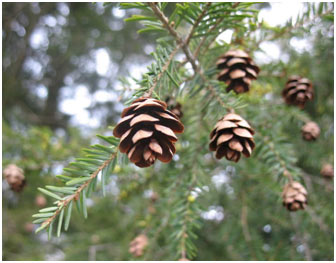Class Gymnospermae
Gymnosperms are one of the successive groups of seed plants of worldwide distribution. They make up about one-third of the world’s forests. The Gymnosperms are heterosporous plants that produce seeds but no fruits. The term Gymnospermae suggests ‘naked seeded’ (Gymno= naked, spermae= seed).
The ovules in these plants are typically borne on the exposed surfaces of fertile leaves (megasporophylls). These ovules, unlike those of angiosperms, are not confined but lie naked on the surface of fertile leaves.
Gymnosperms were the dominant phylum in the Mesozoic age. They are adapted to live where freshwater is scarce throughout part of the year, or in the nitrogen-poor soil of a bog. For that reason, they are still the popular phylum in the coniferous biome or taiga, where the evergreen conifers have a selective benefit in cold and dry weather conditions.
Evergreen conifers continue low levels of photosynthesis throughout the cold months and are ready to take advantage of the very first bright days of spring.
One downside is that conifers are more susceptible than deciduous trees to leaf problems because many conifers do not lose their leaves simultaneously. They cannot, therefore, shed parasites and restart with a fresh supply of leaves in spring.
Characteristics of Class Gymnosperms
- The gymnosperms are heterosporous plants.
- The term Gymnospermae implies ‘naked seeded’ (Gymno = naked and sperm = seed). The ovules in these plants are not confined. They are borne on the exposed surface of fertile leaves. These leaves are called megasporophyll.
- Theyshowregular heteromorphic alternation of generation.
Sporophyte: They have independent and dominant sporophyte. It produces two kinds of spores, microspores, and megaspores. Microspores are developed on microsporophyll and megaspores are formed on megasporophyll.
Gametophyte: The gametophyte is less obvious and dependent. The female gametophyte is permanently kept within the ovule. The megasporophylls cover the ovule. These sporophylls are not folded or joined at the margins to form an ovary. That is why seeds are naked on megasporophyll.
Important Genera of Class Gymnospermae
The important genera are Cycas (sago-palm), Pinus (Pine), Taxus (Yew), Picea (Hemlock) and Cedrus (deodar) Ginkgo, etc.
Classification of Gymnosperms
Gymnosperms are classified into 4 types as provided below.
Cycadophyta
Cycads are dioecious (significance: individual plants are either all male or female). Cycads are seed-bearing plants where most of the members are now extinct. They had grown throughout the Jurassic and late Triassic age. Nowadays, the plants are considered relics from the past. These plants usually have big compound leaves, thick trunks, and small leaflets that are connected to a single main stem.
They vary in height anywhere between a couple of centimeters to a number of meters. Cycads are normally discovered in the tropics and subtropics. Some members have actually adapted to dry arid conditions and some likewise have actually adjusted to oxygen-poor swampy environments.
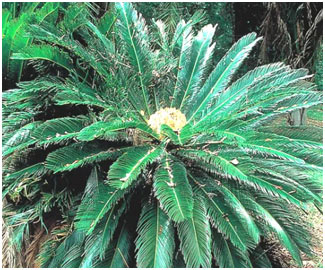
Ginkgophyta
Another class of Gymnosperms, Ginkgophyta, has only one living species. All other members of this class are now extinct. The Ginkgo trees are characterized by their large size and their fan-like leaves. Also, Ginkgo trees have a large number of applications varying from medication to cooking. Ginkgo leaves are consumed as a solution for memory-related conditions like Alzheimer’s.
Ginkgo trees are also really resistant to contamination, and they are resilient against diseases and insect invasions. In fact, they are so resilient that after the nuclear bombs fell on Hiroshima, 6 Ginkgo trees were the only living things to endure within a kilometer or more of the blast radius.
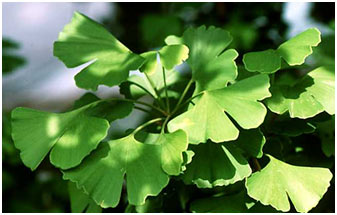
Gnetophyta

Much like any other member of gymnosperms, Gnetophytes are likewise relics from the past. Today, only three members of this genus exist. Gnetophytes usually consist of tropical plants, trees, and shrubs. They are characterized by flowery leaves that have a soft covering. This coating reveals an ancestral connection with the angiosperms. Gnetophytes differ from other members of this class as they possess vessel elements in their xylem.
Coniferophyta
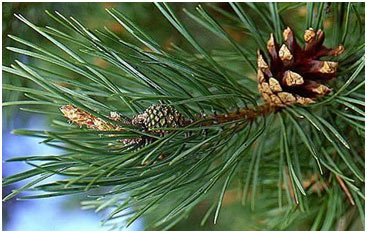
These are the most commonly known species amongst the gymnosperm family. They are evergreen; thus, they do not shed their leaves in the winter season. These are primarily characterized by male and female cones which form needle-like structures. Coniferous trees are usually found in temperate zones where the average temperature is 10 ℃. Giant sequoia, pines, cedar, and redwood are examples of Conifers.
Life Cycle of Gymnosperms
The life process of gymnosperms is both haploid and diploid, i.e., they reproduce through the alternation of generations. They have a sporophyte-dominant cycle. The gametophyte stage is reasonably short. The reproductive organs are generally cones.
Male Cones
These have microsporophylls which contain microsporangia. Microsporangium produces haploid microspores. A few microspores become male gametes called pollen grains, and the rest degenerate.
Female Cones
The megasporophylls cluster together to form female cones. They possess ovules containing megasporangium. It produces haploid megaspores and a megaspore mother cell.
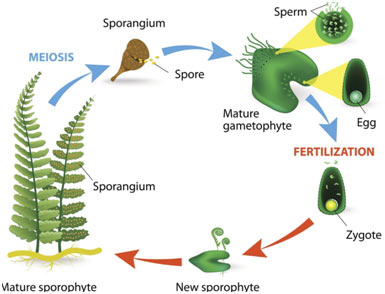
The pollen reaches the egg through wind or any other pollinating agent (insects), and the pollen grain releases a sperm. The nuclei of male and female gametophytes fuse together to form a zygote. This is called fertilization. The seed looks like scales that can be seen on the cones of the gymnosperm.
Class Gymnospermae MCQs
- What does the term “Gymnospermae” suggest?
- A. Seeded fruits
- B. Naked seeds
- C. Flowering plants
- D. Seedless plants
- Answer: B
- How are ovules in Gymnosperms typically borne?
- A. Enclosed within fruits
- B. Exposed on fertile leaves
- C. On the tips of branches
- D. In underground structures
- Answer: B
- Which of the following is a characteristic of Gymnosperms’ life cycle?
- A. Homosporous plants
- B. No alternation of generations
- C. Heterosporous plants
- D. No seed production
- Answer: C
- What is the significance of the term “Gymnospermae”?
- A. Hidden seeds
- B. Exposed seeds
- C. Seedless plants
- D. Seeded fruits
- Answer: B
- During which geological age were Gymnosperms the dominant phylum?
- A. Cenozoic
- B. Mesozoic
- C. Paleozoic
- D. Neogene
- Answer: B
- In which biome are conifers, a type of Gymnosperm, popular?
- A. Tropical rainforest
- B. Desert
- C. Coniferous biome or taiga
- D. Grassland
- Answer: C
- Which part of Gymnosperms is adapted to live where freshwater is scarce?
- A. Leaves
- B. Roots
- C. Seeds
- D. Pollen
- Answer: C
- Which class of Gymnosperms is characterized by fan-like leaves and only one living species?
- A. Cycadophyta
- B. Ginkgophyta
- C. Gnetophyta
- D. Coniferophyta
- Answer: B
- How are Gnetophytes different from other Gymnosperms?
- A. They have no leaves
- B. They are tropical plants
- C. They possess vessel elements in their xylem
- D. They have double fertilization
- Answer: C
- Which genera are mentioned as important in Class Gymnospermae?
- A. Rose, Tulip, Daisy
- B. Cycas, Pinus, Taxus
- C. Oak, Maple, Birch
- D. Fern, Moss, Algae
- Answer: B
- What is the characteristic feature of Cycadophyta?
- A. Needle-like structures
- B. Dioecious nature
- C. Fan-like leaves
- D. Flowers with petals
- Answer: B
- Which class of Gymnosperms is known for its resilience against diseases and insect invasions?
- A. Cycadophyta
- B. Ginkgophyta
- C. Gnetophyta
- D. Coniferophyta
- Answer: B
- What is the primary characteristic of Coniferophyta?
- A. Large fan-like leaves
- B. Shedding leaves in winter
- C. Needle-like structures
- D. No reproductive structures
- Answer: C
- How do Gymnosperms reproduce?
- A. Through flowers and fruits
- B. Through spores and cones
- C. Through seeds and berries
- D. Through tubers and rhizomes
- Answer: B
- What does the gametophyte stage in Gymnosperms involve?
- A. Large and dominant
- B. Short and dependent
- C. Non-existent
- D. Only female gametophyte
- Answer: B
- Which part of the Gymnosperm is responsible for pollen production?
- A. Male cones
- B. Female cones
- C. Seeds
- D. Leaves
- Answer: A
- In the life cycle of Gymnosperms, what is produced by the megasporangium?
- A. Pollen grains
- B. Megaspores
- C. Seeds
- D. Ovules
- Answer: B
- What is the result of the fusion of male and female gametophytes in Gymnosperms?
- A. Formation of cones
- B. Formation of seeds
- C. Formation of pollen grains
- D. Formation of ovules
- Answer: B
- Which part of Gymnosperms is involved in fertilization?
- A. Leaves
- B. Seeds
- C. Pollen
- D. Cones
- Answer: C
- What is the primary function of male cones in Gymnosperms?
- A. Seed production
- B. Pollen production
- C. Ovule protection
- D. Leaf formation
- Answer: B
- What type of climate is suitable for Coniferophyta?
- A. Tropical
- B. Desert
- C. Temperate
- D. Polar
- Answer: C
- Which class of Gymnosperms has a connection with angiosperms due to the presence of vessel elements in their xylem?
- A. Cycadophyta
- B. Ginkgophyta
- C. Gnetophyta
- D. Coniferophyta
- Answer: C
- What do the seeds of Gymnosperms look like in their reproductive structures?
- A. Enclosed in fruits
- B. Naked and visible on cones
- C. Hidden underground
- D. Attached to leaves
- Answer: B
- What is the significance of the term “Gymnospermae”?
- Answer: The term “Gymnospermae” suggests ‘naked seeded,’ indicating plants that produce seeds without enclosing them in fruits.
- How are ovules in Gymnosperms typically borne?
- Answer: Ovules in Gymnosperms are typically borne on the exposed surfaces of fertile leaves, known as megasporophylls.
- Why were Gymnosperms dominant in the Mesozoic age?
- Answer: Gymnosperms were dominant in the Mesozoic age due to their adaptation to environments with scarce freshwater or nitrogen-poor soil, making them popular in coniferous biomes.
- What is the downside of conifers, a type of Gymnosperm, in terms of leaf problems?
- Answer: Conifers are more susceptible than deciduous trees to leaf problems because they do not lose their leaves simultaneously, preventing them from shedding parasites and restarting with a fresh supply of leaves in spring.
- What are the characteristics of Gymnosperms?
- Answer: Gymnosperms are heterosporous plants, and their ovules are borne on exposed surfaces. They exhibit regular heteromorphic alternation of generations with independent and dominant sporophyte and less obvious, dependent gametophyte.
- Which important genera belong to Class Gymnospermae?
- Answer: Important genera include Cycas (sago-palm), Pinus (Pine), Taxus (Yew), Picea (Hemlock), Cedrus (deodar), and Ginkgo.
- How many types are Gymnosperms classified into, and what are they?
- Answer: Gymnosperms are classified into four types: Cycadophyta, Ginkgophyta, Gnetophyta, and Coniferophyta.
- Describe the characteristics of Cycadophyta.
- Answer: Cycadophyta plants are dioecious, seed-bearing, with big compound leaves, thick trunks, and small leaflets. They vary in height and are found in tropics and subtropics.
- What is unique about Ginkgophyta, another class of Gymnosperms?
- Answer: Ginkgophyta has only one living species and is characterized by large size, fan-like leaves, and resilience against diseases and insect invasions.
- Why are Gnetophytes unique among Gymnosperms?
- Answer: Gnetophytes differ as they possess vessel elements in their xylem, showing an ancestral connection with angiosperms.
- What characterizes Coniferophyta among Gymnosperms?
- Answer: Coniferophyta species are evergreen, with male and female cones forming needle-like structures, commonly found in temperate zones.
- How do Gymnosperms reproduce, and what is their life cycle like?
- Answer: Gymnosperms reproduce through the alternation of generations, with a sporophyte-dominant cycle. They have cones as reproductive organs.
- Explain the life cycle of Gymnosperms concerning male and female cones.
- Answer: Male cones have microsporophylls producing pollen grains, while female cones have megasporophylls containing ovules. Fertilization results in the formation of seeds.
- What is the primary function of male cones in Gymnosperms?
- Answer: Male cones produce pollen grains, which are the male gametes responsible for fertilizing the female cones.
- Which class of Gymnosperms has a connection with angiosperms due to vessel elements in their xylem?
- Answer: Gnetophyta has a connection with angiosperms due to the presence of vessel elements in their xylem.
- How are the seeds of Gymnosperms positioned in their reproductive structures?
- Answer: The seeds of Gymnosperms are naked and visible on cones, unlike angiosperms where seeds are enclosed within fruits.
Summary: Class Gymnospermae Tutorial
The Class Gymnospermae tutorial provides a comprehensive overview of gymnosperms, a group of seed plants with global distribution, constituting about one-third of the world’s forests. The term “Gymnospermae” signifies ‘naked seeded,’ emphasizing that these plants produce seeds without enclosing them in fruits.
Key Points:
- Characteristics of Gymnosperms:
- Heterosporous nature.
- Ovules borne on exposed surfaces of megasporophylls.
- Dominated the Mesozoic age; adapted to coniferous biomes.
- Important Genera:
- Cycas, Pinus, Taxus, Picea, Cedrus, Ginkgo, etc.
- Classification of Gymnosperms:
- Four types: Cycadophyta, Ginkgophyta, Gnetophyta, Coniferophyta.
- Life Cycle:
- Alternation of generations (haploid and diploid phases).
- Reproductive structures: male cones (microsporophylls, pollen grains) and female cones (megasporophylls, ovules).
- Drawbacks of Conifers:
- Susceptibility to leaf problems due to asynchronous leaf shedding.
In summary, the Class Gymnospermae tutorial provides a thorough understanding of gymnosperms, their characteristics, classification, and life cycle, making it a valuable resource for those interested in plant biology.

